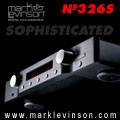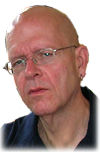 By Wes Phillips
By Wes Phillips
Chesky Sessions Live
December is always a great month for music in New York. This year, it was also a great month for audio events. David Chesky decided to throw what he called a "boogie-woogie piano festival," and invited an audience of about 75 to hear it go down on tape at 52nd Street's AC Pianocraft, purveyor of fine pianos. Scheduled to appear were Bud Seeley, Johnny O'Neal, Mark Braun, and Monty Alexander.
When we arrived at AC Pianocraft, Chesky was so hyperactive he was nearly levitating—which, if you know him, is not exactly unusual. A few minutes later, audio writer Steve Guttenburg gave us the inside scoop. "David sent the Chesky Soundfield microphone out to be refurbed, and one of the [four] capsules was wired out of phase. Because of the way the Soundfield works, that meant that only some of the information was affected, and it took almost the whole day to figure out what was making some music sound so weird. David had to borrow another Soundfield mike, and he only got it a few hours ago."
Under the circumstances, Chesky was actually radiating an amazing level of calm, which can probably be attributed to the support of unflappable engineers Nick Prout and Rick Eckerle, who manned the recording end of things.
The concert began on time, each pianist performing two solo songs on the piano of his choice: a 9' Steinway or a 9' Baldwin. Bud Seeley played the Baldwin; everyone else was drawn to the Steinway.
Seeley established the format, offering a rip-snorting "St. Louis Blues" followed by "Amazing Grace," played New Orleans funeral style—slow to the graveyard, then double-time to the bar. Johnny O'Neal must have been channeling both Thelonious Monk and Fats Waller, because he played absolutely brilliantly faceted compositions that evoked both: a version of "Happy Days Are Here Again" that liberally quoted from "Jitterbug Waltz," and a medley of hymns, "Glory Glory Hallelujah." Mark Braun, founder of the Ann Arbor Boogie-Woogie Piano Festival, chimed in with "Pinetop's Boogie-Woogie" and an original hymn. Monty Alexander contributed a brisk set of changes on "Green Onions" and an absolutely brilliant improvisation in sonata-allegro form that twinned "Nobody Knows the Trouble I've Seen" with Bob Marley's "No Woman, No Cry." Then David Chesky announced a special guest, Eric Reed, who continued in the gospel vein with a medley of "Jesus, Keep Me Near the Cross," "Power of the Blood," and "Saved by the Lamb."
And that was just the first half.
The second session was all duets—and it was so good that I stopped taking notes. Fortunately, David, Nick, and Rick got it all on tape. The disc should be out in spring 2005.
I spotted Steve Guttenburg at an open meeting of the Audio Engineering Society's New York section a few days later and we talked about the concert. "I wonder how much of that energy will make it to the CD," I said. Steve looked at me as though I was slow. "All of it. David doesn't edit that stuff. What you heard, for better or for worse, is what you're going to get."
That's a gratifying thought. It was a special evening. You should have been there. Maybe you will be.
The New York AES Meet'n'Greet
Three days after the Chesky session, I hied me down to Manhattan retailer Innovative Audio, where the New York chapter of the Audio Engineering Society was holding its annual meet'n'greet. The event is mostly an excuse to eat cookies and schmooze, but since the schmoozers included Steve Rosenthal and Jerry Bruck, I knew it would be an interesting evening.
Rosenthal, owner of The Magic Shop Recording Studio and The Living Room, an intimate performance space in downtown Manhattan, didn't mince words as he spoke about his experiences in hi-rez and multichannel mastering. "I love high-resolution playback formats—they let you take home tracks that come awfully close to what's on the master tape. But we've been kidding ourselves that the battle was between SACD and DVD-A[udio]. It was between both of them and MP3—and MP3 kicked their butts. I hope we get another chance at a high-resolution playback format, but it won't happen in the near future. The public has spoken."
Rosenthal also played several of his multichannel remasterings of classic rock'n'roll recordings. I was sitting in the back, near one of the rear speakers, so that was pretty much all I heard, but Rosenthal was adamant about his preference for putting information all around the listener. I wasn't convinced by his mix of the Rolling Stones' "Sympathy for the Devil," which had the congas and "whoo-hoos" cranked up pretty loud in the rears. Rosenthal cited Jean-Luc Godard's footage of the recording session in his film One Plus One (1970, aka Sympathy for the Devil) as his inspiration for that maneuver.
The job he did on Sam Cooke at the Copa, on the other hand, was very convincing. Again, he used a film for guidance. "Amazingly, no one could tell us what the dimensions of the Copa were. It was a large room, it was a small room—no two sources agreed. People couldn't even agree on whether or not they served food! But Martin Scorsese filmed the nightclub scene in GoodFellas in the old Copa space, so we watched the DVD about a million times, trying to work out the dimensions of the room."
Was it true to life? I have no idea, but it was convincing.
Less audio verité but nonetheless thrilling was Rosenthal's work on his unreleased (as yet) multichannel version of Mike Bloomfield, Al Kooper, and Steve Stills' Super Session. "Season of the Witch" had those rear channels pumping again, but a late-night jam session is one of the few situations in which I can actually believe an audio perspective that's "in the middle of the musicians." And the recording was spectacular. Get this puppy out there, Columbia/Legacy!
Posthorn Productions' Jerry Bruck presided over a discussion of the differences between recording a CD and a DVD-Video of the same performance. The performance in question was Mahler's Symphony 3, with Glen Cortese and the Manhattan School of Music Symphony Orchestra at New York's Riverside Church. It's available on CD as Titanic Ti-252, on DVD as What the Universe Tells Me (Video Arts International DVD 4267). (The CD of Mahler's Symphony 6 from the same forces, Titanic Ti-257, was Stereophile's "Recording of the Month" for August 2000.)
Bruck first played the two-channel CD to illustrate how convincing an illusion stereo can provide. The recording had spread and depth and dynamics aplenty. He then astounded the assembled engineers by revealing that he'd used but a single pair of microphones in a modified ORTF configuration. You could hear jaws drop to the floor at the very thought.
He then played portions of the DVD, which was visually a bit too busy for my tastes—lots of pan shots and suchlike. Bruck was candid about the reasons for that, telling us that audio editing on video was dependent on video frame rate. "You can cover a tremendous number of audio edits with a few judicious shots away from the musicians playing. You don't have to worry so much about syncing the sound to the video that way."
He then again astounded the audience by pointing out that, although we could all see spot mikes located throughout the orchestra, he'd mixed everything down to two channels on the fly. There was no center channel and no surrounds—all the space and solidity were the result of two-channel stereophonic sound.
Heh-heh-heh. I laugh my evil laugh (to quote Stereophile's Sam Tellig).
Mo' Money
We got a nice response to the "Money: That's What I Want!" CD playlist last time out—including one order for it (not that it was for sale). Paul Graber asked, "Wasn't Randy Newman's song called 'It's Money That Matters,' with a blinding guitar solo by Mark Knopfler?" Well, yes, Newman did record a song called that on Land of Dreams, but I was thinking of his other song on the subject, "It's Money That I Love," from Born Again. I guess I could invoke the one-song-per-artist rule that Rhino uses for its survey compilations—if I hadn't already included two songs by Barrett Strong. So yeah, let's add that one.
Producer (Miles Davis) Gordon Melzer said, "Nice list, but you forgot the best one of all: 'Money Changes Everything,' popularized in the 1980s by Cyndi Lauper. Got heavy rotation on MTV back then too, and was covered by Carlene Carter and Manfred Mann, and written by Tom Gray of The Brains." Ouch! How could I have missed that one?
Tom Katz was stunned that I overlooked Merle Haggard's "Working Man Can't Get Nowhere These Days." Me too, now that he mentions it.
Steven Ford said he "loved Wes Phillips' article with the homage to Nick Hornby's High Fidelity, but how could he possibly have missed 'All the Money's Gone' by Greg Brown and 'Busted' by Ray Charles?" I've never heard the Greg Brown, but now I have to go find it—on his In the Dark with You (CD, Red House RHR CD08). As for "Busted," how indeed could I have overlooked it?
Let's do this again. Send in your CD-mix theme suggestions to STLetters@Primediamags.com so we can all put our heads together and come up with "ultimate compilations" for the really good themes. I was thinking it would be interesting to compile a collection on the subject of impotence, but I can come up with only one song: "Gone Dead Train." Well, one and a half, if you count "A Wedding in Cherokee County." (She laughed at my mighty sword / Why does everybody laugh at my mighty sword?) Both are by Randy Newman, proving that it's not just money that matters—er, that he loves.

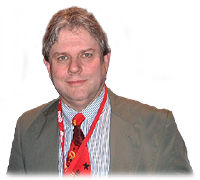 By John Atkinson
By John Atkinson
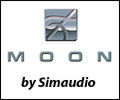
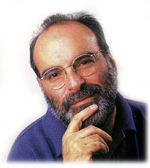 By Ken Kessler
By Ken Kessler
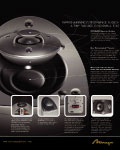
 By Wes Phillips
By Wes Phillips
